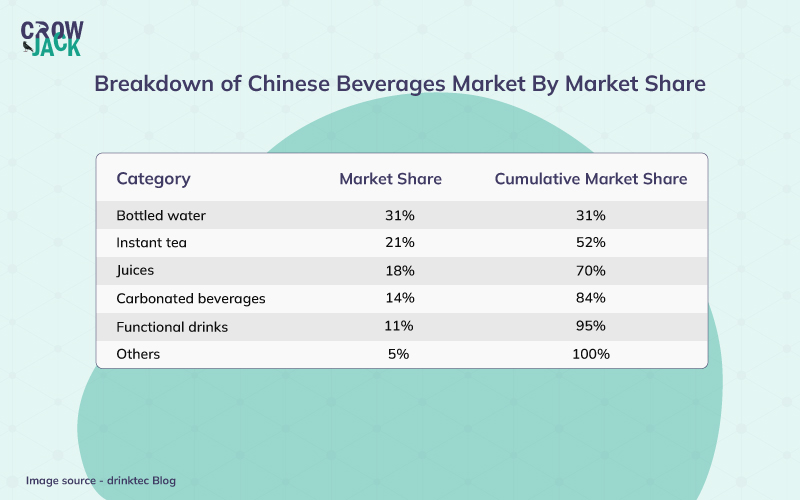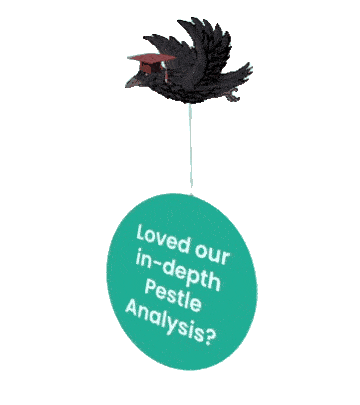Coca-Cola Overview
Coca-Cola is an American manufacturer of the world’s favorite food and beverage products. Some of the famous products sold by the company include cola, diet coke, Fanta, Dasani water, Sprite, etc. The company has a vast presence and its products are sold throughout the world except for two nations, Cuba and North Korea. It generated a revenue of $38.7 billion in 2021 and employs around 79000 people in its worldwide operations.
PESTLE analysis is one of the important tools to analyze the external environment that can impact the industry. This article would analyze the impact of the political, economic, social, technological, legal as well as environmental factors that can have an impact on the automobile industry. The PESTLE analysis would prove to be beneficial for the F&B industry to formulate strategies for efficient operations in the widely popular market US as well as an emerging market, China. Besides, in order to learn more about the PESTLE Model, you can go through our exclusive PESTLE Analysis Guide.
Table of Contents
A Precise PESTLE Analysis of Coca-Cola
Political factors affecting Coca-Cola
The United States is first on the list of the world’s strongest economies. The US is the most important market for the companies dealing in food products and the political environment there would impact the functioning of the companies on a large scale. The current political environment in the US is business-friendly wherein the federal government recently cut down the corporate tax rates from 35% to 21% to boost the investments and support the companies by letting them maintain adequate levels of liquidity with them.
Further, the federal government of the US is trying to smoothen the credit systems for the food processing companies wherein the government would assist the companies in availing more and easy capital for the food processing and plans to keep aside the funds of $275 million for lending to the industry. This would ease the capital requirements of the companies which in turn would encourage them to enhance their business (White House, 2022).
Moreover, the US has a free trade agreement with its neighboring countries Canada and Mexico which allows for the free movement of labor and goods. Hence, the companies would easily be able to source the labor from outside and the transportation process would be more streamlined for the companies. However, as per the new government guidelines, it is mandatory for the companies to include the actual amount of vitamin D, calcium, iron, and potassium present in the products to generate more awareness among the customers of what they are consuming (FDA, 2022). This could lead to an increase in the cost as the companies would have to change the labeling in all the batches.
Besides, the Chinese government is tightening the norms for the food that is high in fat, sugar, and salt wherein the government has restricted the time for which these types of foods can be advertised moreover the stores are not allowed to place these products for sale on the front shelves and near the checkout lanes (Armstrong, 2022). This can limit the attractiveness of the products and hence can lead to a decline in the sale of the companies.
Economic factors affecting Coca-Cola
The US is growing at a rapid pace, the growth in 2021 was recorded at 5.7% which was the highest in almost 40 years. The positive growth signifies a potential opportunity for the companies to enhance their footprint. However, the Federal Reserve recently increased the base rate for credit lending by 0.25% which can increase the cost of borrowing for the companies, hence they would be discouraged to invest in the country.
To add to the woes, the interest rates have been increased by the Federal Reserve by 25 basis points which would increase the final repayments of the company. This would lower the burrowing power of the companies as they would have to repay more amount as the interest rate and hence there would be a bit of a slowdown in the business activities.
But the positive sign for the companies is that unemployment is lowering. It was 3.9% at the end of 2021 and is expected to fall by a bit in 2022 to 3.8% and 3.5% in 2023 (Knoema, 2021). This means that more people would have fixed sources of income and hence their purchasing power would increase which would lead to an increase in the consumption of food and beverages.
Besides, China's growth rate at the end of 2021 was 8.1% (Patranobis, 2022). The economy is also expected to grow at a higher rate of more than 5% between 2022 and 2023 as well. The high growth rate can be an opportunity for companies to enhance their base.
In the US, the food market is worth more than $996 billion while the beverage market constitutes about $445 billion with coffee and bottled water being the highest consumed nonalcoholic drinks in the US. The market is expected to grow by a CAGR of 4.84% from 2022-2026. Further, the breakdown of the Chinese beverage market is illustrated below.

Social factors affecting Coca-Cola
As per McKinsey, the trend of online shopping for snacks among the customers in the US has increased by around 20%. This trend signifies the need for the companies to focus on e-commerce channels as well. Further, a high number of customers in China, around 52% prefer purchasing sustainable products (Ho, 2021).
Hence, the companies should adopt sustainable practices for conducting operations. Moreover, the Chinese customers are sifting more towards nutritional diets and this can be a threat for the majority of the food and beverage companies as the majority of companies sell food products that are high in fat and sodium. It has become essential for food and beverages company to undertake effective change management process for product diversification in terms of organic and healthier alternatives.
Technological factors affecting Coca-Cola
The US government spends extensively on research and development and has the highest budget for research and development. It spent $157 billion in 2021 for research in business and the expenditure for 2022 is estimated to be $171 billion while the Chinese government and private players combined made an investment of about $375 billion in 2021 in research and development. Further, various technologies are changing the way the F & B industry functions.
The robots are being used in the manufacturing facilities for performing various operations. In addition, the use of 3D printing is gaining trend wherein the prototypes and designs of the food product are developed through 3D printers. This ensures less time in manufacturing as compared to traditional manufacturing.
Many companies are making use of Big Data Analytics to predict the demand of the products in the stores and this assists the companies in ensuring the all-time availability of the products in the stores which can also lead to more customer satisfaction as they would always have the availability of their favorite products on the shelves.
Legal factors affecting Coca-Cola
The laws that impact the F&B industry in the US include the Federal Food, Drug and Cosmetics Act wherein the federal government has formed the Food and Drug Administration and empowered it with establishing the regulatory requirements and overseeing the compliance to the laws.
The FDA conducts the inspections of food establishments along with the laboratory analysis of food and undertakes actions against the companies found violating the norms (Ferrera, 2018). Further, the competition in the industry is intense, and to ensure fair competition, the government has formulated various laws that prohibit the companies from forming cartels, creating monopoly through unethical mergers and acquisitions and the company that is found to be indulging in anti-competitive practices can be fined heavily.
Besides, the F&B industry is involved in the collection of large amounts of data and the government has formulated new Data Privacy Laws wherein the companies are not allowed to transfer any personal data of customers beyond the country’s boundary. This can impact the F&B industry as the companies would have difficulty in transmitting the data and they would not be able to use it for commercial purposes.
Environmental factors affecting Coca-Cola
The food and beverage industry in the US contributes about a third of the total greenhouse gas emissions while in China the industry consumes huge amounts of water on a daily basis and as a result, contributes hugely to water pollution. The US is a signatory to the Paris Agreement and hence has established the target to eliminate carbon emissions. This means that the country would come up with various policies that can disrupt the operations of the F&B industry and to ensure continuity in the operations, the companies would need to shift to sustainable sources.
To encapsulate, it can be concluded that the F&B industry has a good chance of making profits in the US as their tax liability has been lowered by a huge amount, and moreover the government is providing other incentives as well. However, the operations in China can suffer a bit of a blow because of the fact that the government has tightened the norms for the products high in fat, sodium, and sugar and even the customer preference is changing and the people are moving toward a more nutritional and healthy food diet. Moreover, in order to assess the internal capabilities of the company, you can go through our meticulously conducted SWOT Analysis of Coca-Cola.
Recommended Readings
References
Armstrong, K. (2022). New regulations crack down on the fight against foods high in fat, sugar and salt. www.taylorwessing.com. Retrieved 16 May 2022, from https://www.taylorwessing.com/en/insights-and-events/insights/2022/02/dl-new-regulations-crack-down-on-the-fight-against-foods-high-in-fat-sugar-and-salt.
FDA. (2022). Changes to the Nutrition Facts Label. www.fda.gov/. Retrieved 11 May 2022,from https://www.fda.gov/food/food-labeling-nutrition/changes-nutrition-facts-label.
Ferrera, S. (2018). 4 Regulations That Affect Food and Beverage Manufacturers. blog.southeastcomputers.com. Retrieved 16 May 2022, from https://blog.southeastcomputers.com/regulations-that-affect-food-and-beverage-manufacturers.
Ho, S. (2021). Sustainability in China: What Do Chinese Consumers Really Think About It?. /www.greenqueen.com.hk. Retrieved 16 May 2022, from https://www.greenqueen.com.hk/chinese-consumer-perception-sustainability/.
NORMILE, D. (2020). China again boosts R&D spending by more than 10%. www.science.org. Retrieved 16 May 2022, from https://www.science.org/content/article/china-again-boosts-rd-spending-more-10#:~:text=In%20terms%20of%20absolute%20expenditures,OECD's%20purchasing%20power%20parity%20comparison.

 Proof Reading
Proof Reading  Copy Writing
Copy Writing  Resume Writing
Resume Writing  Blogs
Blogs Guides
Guides SOP's
SOP's Student Resources
Student Resources Research Topics
Research Topics Login
Login Register
Register



